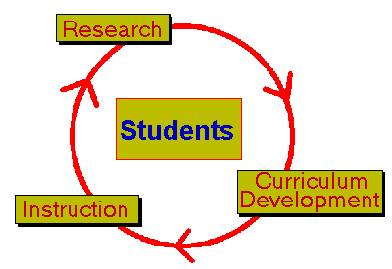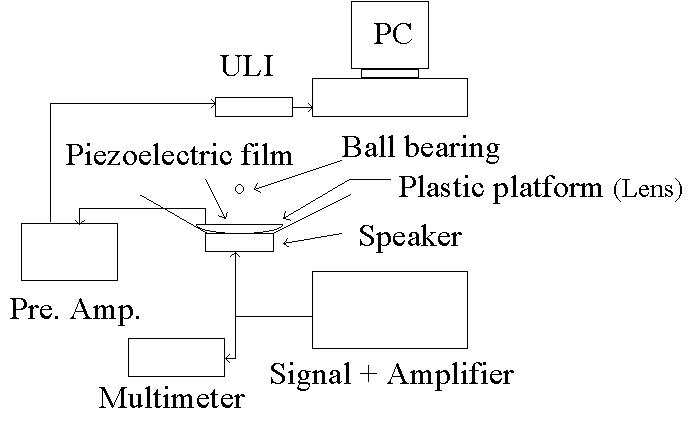

The bouncing ball
an MBL demonstration of the period doubling approach to chaos
Lei Bao
Physics Education Research Group
University of Maryland
* sponsored in part by NSF grants RED-9355849 and DUE-9455561
Motivations
Context of the experiment
The advantages of the bouncing ball experiment
We try to construct a simple experiment that can easily work in a hands-on lab class.
The experiment of a ball bouncing on an oscillating platform is a very appropriate one.
Previous research done by others
The bouncing ball experiment is famous and well studied. Many researchers have done excellent jobs on this topic.
P. J. Holmes
Zbigniew J. Kowalik et al
N. B. Tufillaro et al
The bouncing ball laboratory
In order to implement the bouncing ball experiment as a lab, we incorporated some new methods into the traditional experiment.
Experiment setup

Interfacing with ULI
pre amplifier: 300~10khz ( to avoid background noise)
data collection rate: 9000 pt/s for a driving frequency of 80 Hz
The major activities in the experiment
The two activities that we are looking for in the lab are to
Typical trajectories of simple orbits
Typical 1-T orbit 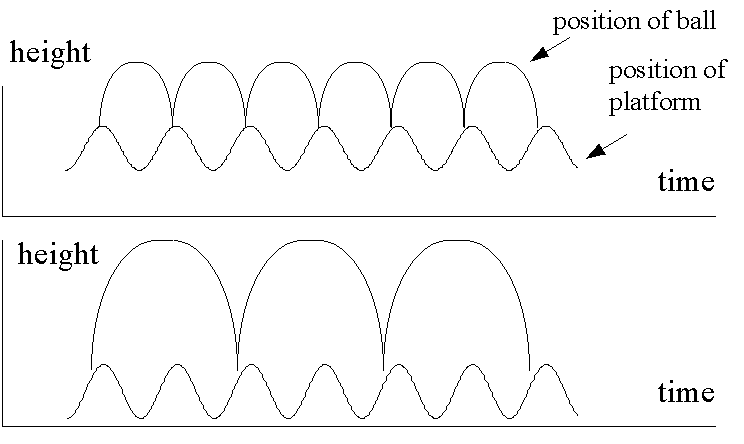
Typical 2-T orbit
Relation between the period and the amplitude of the pulse
The relation between the period for stable even mode orbits and the amplitude of the pulse generated by the collision is:
Vpulse µ F µ Dp = mgT The pulse generated by the piezoelectric film is proportional to the force acting on the film The velocity of the ball right before the next collision happens is: v = 1/2gT => Dp = mgT
Consider the 1-T and 2-T orbits. The ball in a 2-T orbit stays in the air twice longer than in a 1-T orbit, therefore the pulse generated in 2-T orbit should be twice as large.
The signal output shown on the computer
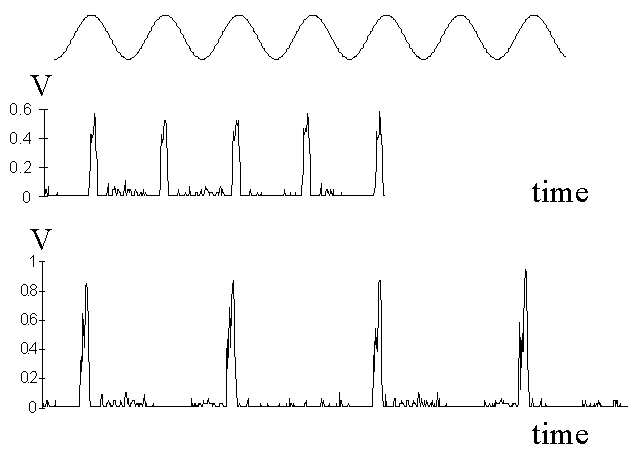
Period doubling
Shift mode of the 2-T period
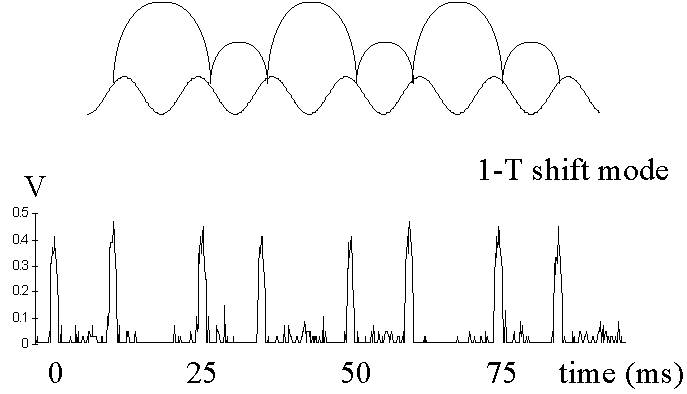
Bifurcation diagram
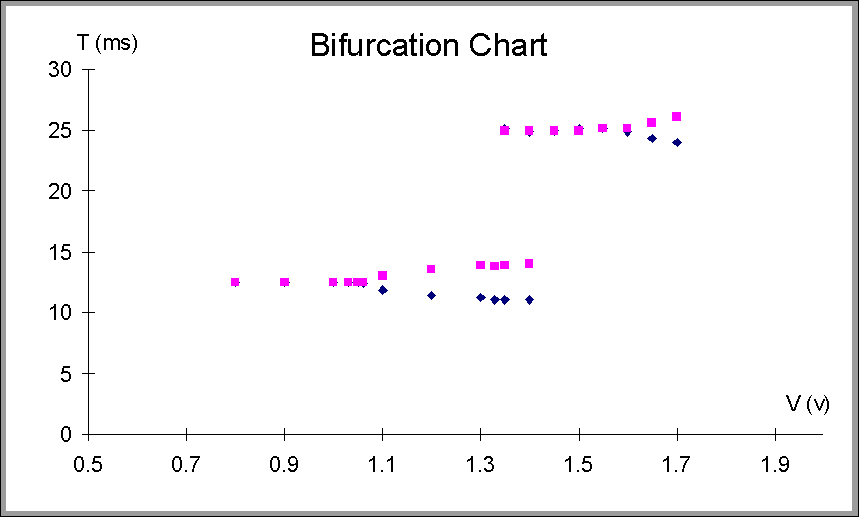
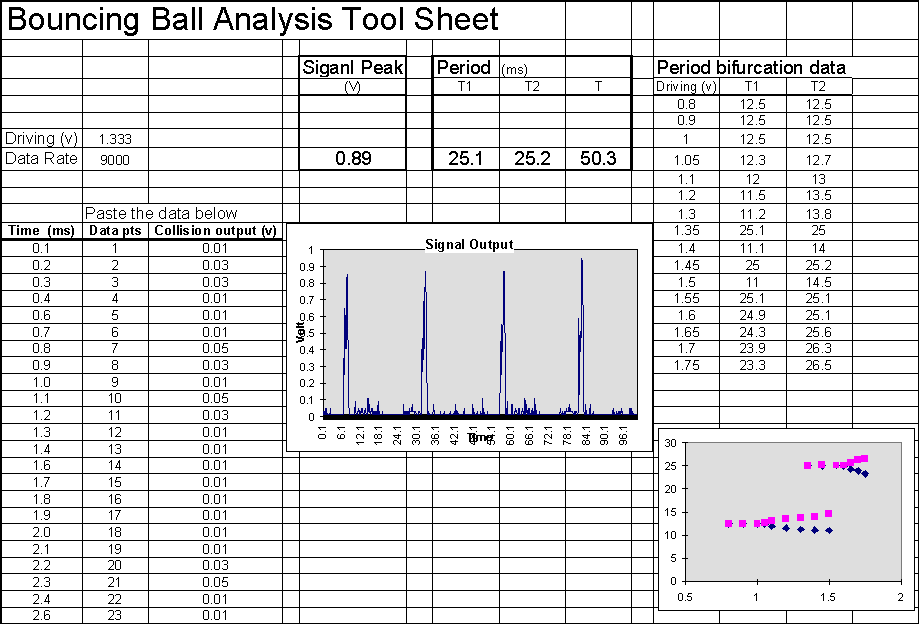
Iterative process of research, instruction, and curriculum development
